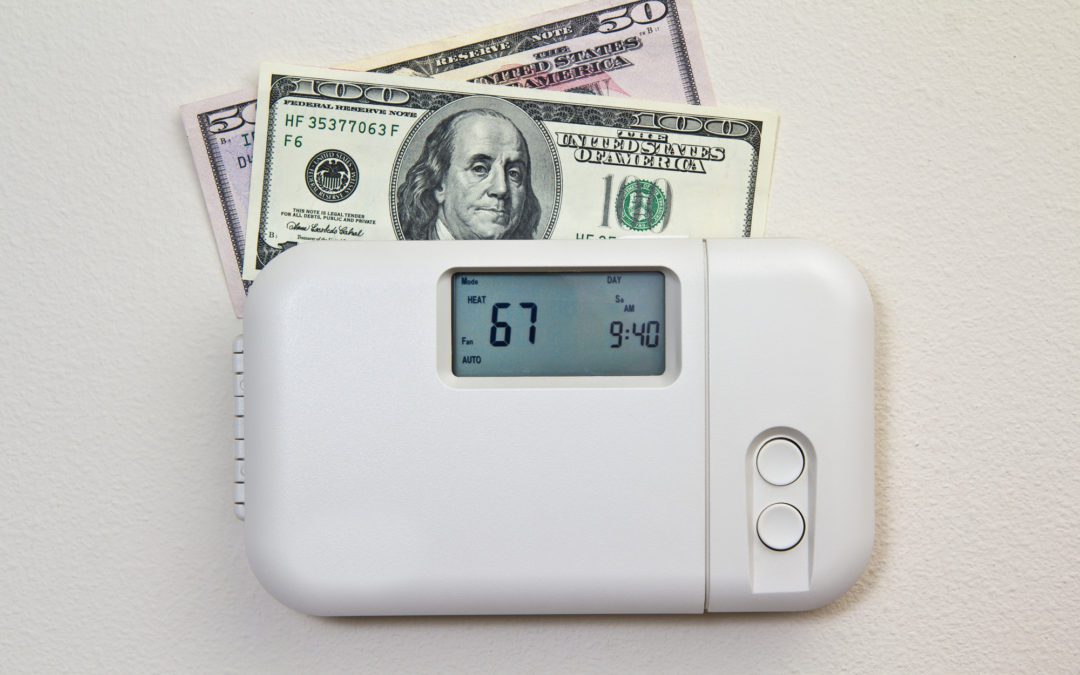According to the United States Energy Information Administration, air conditioning accounts for roughly 12 percent of annual household energy expenditures in the U.S. Most of that energy usage—and the expenditure that comes with it—happens during the summer months. June, July, and August—with an occasional burst of heat in May and September—account for the vast majority of in-home AC use, regardless of region. Whether you are aiming to be more environmentally sustainable in your home or trying to lower your monthly energy bills, finding ways to have a more energy-efficient HVAC system is never a bad idea. Here are three energy-saving tips that you can use in the summertime to save energy and money—all without sacrificing comfort.
Schedule an HVAC service
The best HVAC tips—no matter the time of year—always revolve around proper maintenance and care. To make sure your AC unit is ready for a robust summer season, you should schedule an inspection and service call in the early spring. Your HVAC technician can change out filters, assess the system for problems, and provide other upkeep services aimed at keeping the system in good health. In turn, your AC system should run more efficiently (and more reliably) all summer long.
Be smart and strategic with your thermostat
Your thermostat may not be the heart of your home’s HVAC system, but it is the brain—particularly if you are using a smart thermostat. As such, your thermostat deserves as much attention as the actual air conditioning unit if your goal is to achieve genuine AC energy saving. Numerous thermostat-related best practices can help cut down on energy usage during the summer, including:
Find the highest temperature at which you can still be comfortable.
The closer your indoor temperature is to the outdoor temperature, the more energy and money you will save in home cooling. Now, obviously, the goal of home air conditioning is to offer relief from overly-hot outdoor temperatures. The key, then, is finding the highest temperature at which you can be consistently comfortable. The Department of Energy recommends setting your thermostat at 78 degrees Fahrenheit to save as much as 10 percent in annual cooling costs. If 78 is too warm or too humid for you, experiment with dropping the temperature by one degree at a time until you find a happy medium.
Keep the home warmer when you are away
If you are out of the house for an extended period—whether for a family vacation or even just for the workday—bump the thermostat up a few degrees to save energy. Otherwise, you’re just spending money to create cool air you won’t be around to enjoy. If your daily schedule is pretty consistent, you can even program your thermostat to adjust itself throughout the day.
Protect your thermostat from heat sources
If your thermostat is close to a heat source, it will think the house is hotter than it is—in turn signaling the AC unit to run for longer or to run more frequently than necessary. Lamps, TV sets, or computers can all create heat that, if a thermostat is nearby, will affect the device’s ability to measure temperature accurately. Similarly, if sunlight from a nearby window or skylight tends to shine on the thermostat, you’ll want to draw the blinds or curtains to shield the thermostat from that heat.
Use Fans and Ventilation to Aid With Your AC Energy Saving
Remember that your AC unit isn’t the only weapon you have to fight oppressive heat in the summertime. It does tend to be the most powerful weapon, yes, but pairing that with fans or smart ventilation strategies can keep your home comfortably temperate for a lower cost. According to Carrier, using fans throughout your home—to circulate air and create air movement—makes it possible to set your thermostat four degrees higher than you normally would without feeling a significant difference in comfort. It’s not just ceiling fans, box fans, and desk fans, either. Using the fan in your bathroom when you shower, or in your laundry room when you wash or dry your clothes, can help remove heat and humidity from your home so that your AC unit doesn’t have to do all the work. Finally, opening your windows during cooler days—or in the evening, after the heat outside dips—can cool your home naturally and give your AC unit a break.
While this list is by no means comprehensive, these three energy savings tips can make a big difference as you try to cool your home without spending an arm and a leg to do so. Not only will these strategies reduce your energy usage and cut your utility bills in the short term, but they can also help maximize the lifespan of your AC unit—saving you money in the long run, too.

